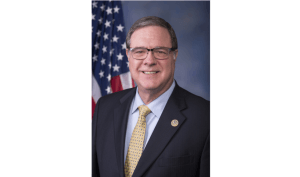The Senate passed SB 5489, also known as the Healthy Environment for All (HEAL) Act, off the floor last week. The bill creates a task force with the goal to “incorporate environmental justice principles into the operations and activities of state agencies.”
The 27-21 vote was almost entirely along party lines. All votes in favor came from Democratic senators.

The Morning Wire: Keeping you informed on politics, policies, and personalities of Washington State.
The bill defines “environmental justice” as “the fair treatment and meaningful involvement of all people regardless of race, color, national origin, or income with respect to the development, implementation, and enforcement of environmental laws, regulations, and policies.”
It follows the recent launch of the Environmental Health Disparities Map, a tool created by a coalition of organizations “rooted in communities of color and people with lower incomes” called Front and Centered, alongside state agencies and the University of Washington.
The Washington Department of Health hosts the map online via the Washington Tracking Network (WTN) Information by Location tool, where visitors can view environmental health factors across the state by census tract.
It displays cumulative environmental health impact scores at a neighborhood level, using data on environmental factors (e.g. diesel emissions and proximity to heavy traffic roadways) and data that indicates whether a population could be more vulnerable to the impacts of those factors (e.g. poverty and low birth weight).

Seattle Times columnist Tyrone Beason wrote that the tool “validates concerns and suspected disparities that people in environmentally distressed areas…have been talking about for decades.”
“These interactive maps offer concrete evidence of the gap between wealthier and whiter census tracts and ones with more people of color, immigrants and poor or working-class households, which are often located nearer to industrial zones, polluted waterways, high-traffic roads and neglected utility infrastructure,” Beason wrote.
California has launched a similar effort with its CalEnviroScreen tool, which it uses to direct proceeds from its cap-and-trade program.
The HEAL Act essentially takes Washington’s map and applies it to agencies’ work via a task force.
By October 31 of next year, the task force would be required to issue a report to agencies, the Legislature, and the governor. That report would have to include, at minimum:
- For agencies, guidelines on how to use the analysis by WTN when they’re adopting rules, policies, or guidelines;
- Best practices for increasing public participation and engagement, including a specific recommendation on “how to best meaningfully consult vulnerable populations when periodically evaluating and updating the cumulative impact analysis;”
- “Recommendations for establishing measurable goals for reducing environmental health disparities for each community in Washington state and ways in which state agencies may focus their work towards meeting those goals;” and
- Guidelines for prioritizing highly impacted communities and vulnerable populations.
The bill requires state agencies to adopt WTN’s analysis “through rules, policies, or guidelines and consistent with task force recommendations” in order to identify communities and populations that are highly impacted and reduce environmental health disparities for those areas and populations.
Within 60 days after the report is released, the Department of Health would have to start a process to develop model policies for state agencies.
According to the bill report, the task force created by the bill would be made up of: the directors of the departments of Commerce, Ecology, and Puget Sound Partnership, the secretaries of the departments of Transportation, Health, and Energy Facilities Site Evaluation Council, the chair of the Council, the commissioner of Public Lands, a member of an organization representing statewide environmental justice interests, and three members appointed by task force co-chairs based on maintaining a balanced and diverse membership. The group would also include three governor-appointed members to represent the interests of tribes, business, and organized labor.
Lawmakers speaking against the bill in debate included Sen. Doug Ericksen, who expressed concern that Gov. Jay Inslee, whom he said has made his views on the environment “extremely clear,” would be appointing members to the task force. And, Ericksen said, he thinks the bill implies that the new task force would have a “broad swath of authority.”
“I think to the layman reading that, it makes it very clear that the state agencies will still have to do what this unelected board tells them that they have to do,” Ericksen said.
Sen. Rebecca Saldaña, the bill’s lead sponsor, and Sen. Bob Hasegawa said that that’s not the case.
“What this bill does is simply creates a task force to recommend strategies for state agencies to incorporate environmental justice principles into their responsibilities and will allow the agencies to better understand this new tool and how they can use it in informing their work,” Saldaña said.
The bill now moves to the House for further consideration.
Your support matters.
Public service journalism is important today as ever. If you get something from our coverage, please consider making a donation to support our work. Thanks for reading our stuff.










